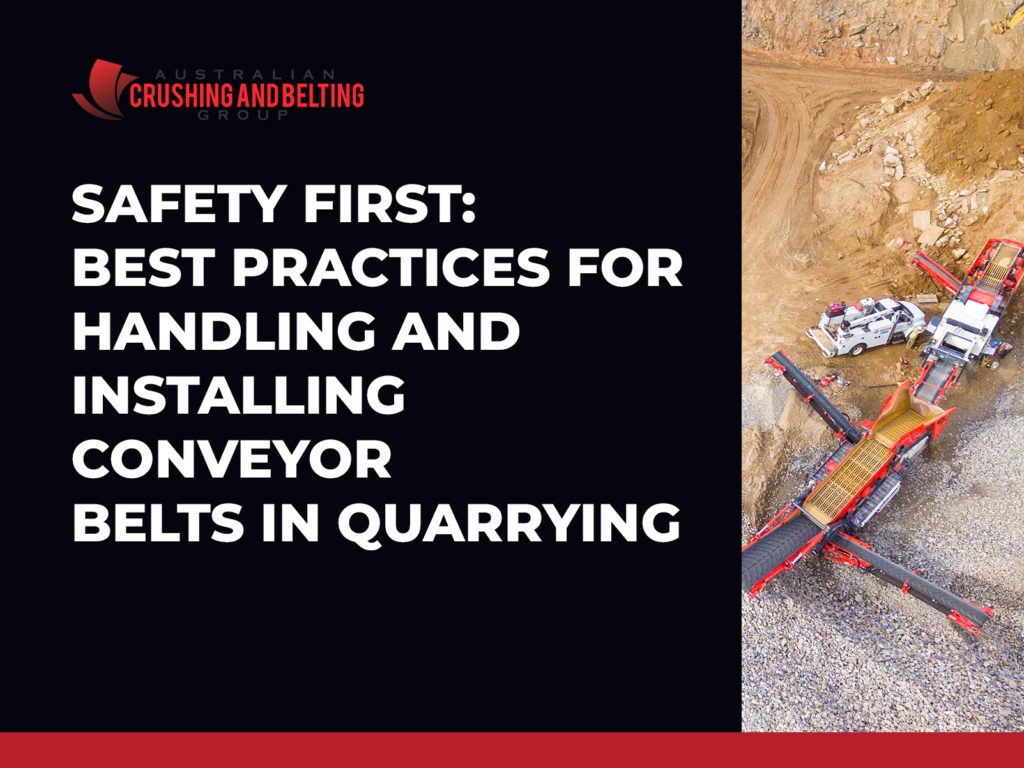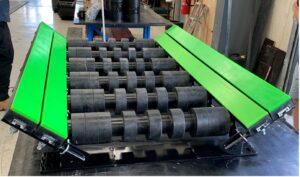Safety First: Best Practices for Handling and Installing Conveyor Belts in Quarrying
Conveyor belts might not get the spotlight in the quarrying world, but they’re doing the heavy lifting—literally. They keep tons of crushed rock, sand, and gravel moving day in and day out. But they can become serious safety liabilities when mishandled, installed carelessly, or neglected.
That’s why safety around conveyors isn’t something to gloss over. Whether installing a new belt or maintaining an existing system, the approach must be deliberate, informed, and consistent. Here’s a complete, no-nonsense guide to staying safe when working with conveyor belts in quarry environments.
Start With a Solid Plan
Every safe operation starts with a well-thought-out plan. Before installation begins, take a deep dive into the setup. Understand the terrain, the material being moved, the load capacity, and the intended function of the conveyor. No quarry sites are alike, so cookie-cutter solutions don’t cut it.
A proper risk assessment is essential. Be aware of any pinch points, overhead hazards, uneven surfaces, or moving equipment in the area. It is here that things can go awry quickly. Incorporate mitigation strategies into your plan — whether rerouting foot traffic, reinforcing unstable ground, or scheduling around peak traffic hours.
Wear the Right Gear, Every Time
Personal protective equipment (PPE) is not discretionary — it’s mandatory. Workers should wear hard hats, high-visibility clothing, steel-toe boots and protective gloves. And eyeglasses are required in dusty conditions (which, if we are honest, is usually in a quarry).
But it’s not only about having PPE — it’s about wearing it on the job correctly and consistently. Supervisors must lead by example; safety checks should happen before every shift.
Take Installation Seriously—No Shortcuts
When it comes time to install the conveyor belt, precision matters. Ensure power sources are locked out and tagged before anyone touches the system. The Lockout/Tagout (LOTO) procedure is non-negotiable—many injuries happen when someone assumes a machine is off.
As the belt is installed, alignment is key. Poor alignment causes uneven wear, inefficient operation, and dangerous drift. Tools like laser alignment systems or guide strings can help ensure things are dialled in.
Everything needs to be properly secured—pulleys, brackets, tensioners. Loose bolts aren’t just a maintenance issue but a real safety risk. And makeshift tools? Leave them in the toolbox. Use the right equipment for each step, even if it takes longer.
Clean Site, Clear Mind
A cluttered worksite is a hazard in disguise. Keep the area around the conveyor clear of debris, tools, and loose material. This isn’t just about being neat—it directly reduces the risk of trips, slips, and collisions.
During installation, only trained, authorized personnel should be near the conveyor. Limit distractions and unnecessary foot traffic to keep the focus where it belongs.
Know the Conveyor Inside and Out
All personnel working on or near the conveyor should be familiar with the specific system—how it operates, where the emergency stops are located, and what to do if something goes wrong. That level of awareness can make the difference between a close call and a serious incident.
Emergency stop buttons and shutdown points should be clearly labelled and easily accessible. When people know exactly what to do, response times improve dramatically in a critical situation.
Stay Ahead With Maintenance
Installing the conveyor belt is only half the job. Long-term safety comes down to consistent maintenance.
Routine inspections should be scheduled and documented. Look for signs of wear on rollers, belt surfaces, and bearings. Misalignment, fraying, or material build-up can be early warnings of bigger problems. By addressing these issues before they escalate, you extend the life of the equipment and reduce risk.
Communication Is Everything
Clear communication keeps everyone safe in a noisy, high-activity environment like a quarry. Pre-shift meetings should cover the day’s tasks, potential risks, and contingency plans. Use radios or hand signals where needed, and make sure everyone knows who’s in charge during each phase of the installation or maintenance work.
Be Emergency-Ready
Despite your best efforts, incidents can happen. The difference between an accident and a crisis often comes down to preparedness. Emergency shutoffs must work properly, first-aid kits should be stocked and nearby, and every worker should know what to do in the event of injury, entrapment, or equipment failure.
Final Thought
Installing and maintaining conveyor belts in quarrying operations isn’t just a technical job—it’s a responsibility. When handled properly, conveyors are efficient, reliable, and safe. However, that only happens when every person on-site treats safety as the standard, not the afterthought.
Quarry work is tough, but safe doesn’t mean slow. It means smart, consistent, and proactive. Because at the end of the day, the real goal is for everyone to head home just as they arrived—safe and sound.






